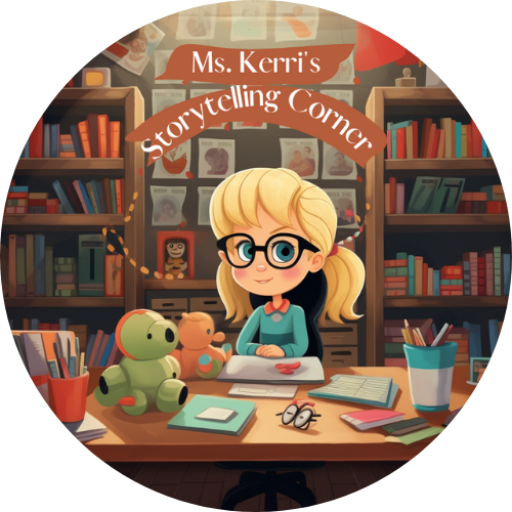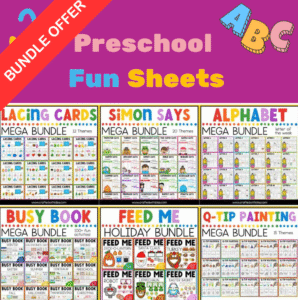Figuring out how well your child is reading can feel a bit like a mystery, right? You want to help them, but it’s tough if you don’t know exactly what they need. Good news! You don’t need fancy tests or a teacher’s degree to get a good idea of their reading skills. This guide will walk you through some simple ways to do a kindergarten reading level check at home, so you can help your little one become a confident reader.
Key Takeaways
- Knowing your child’s reading level helps you give them the right kind of support.
- Picking a book that’s ‘just right’ is important for a useful assessment.
- Look at how your child handles sounds, letter-sound connections, reading speed, and understanding.
- Simple home checks can show you where your child is doing well and where they might need a little more practice.
- There are lots of free tools out there to help you check and support your child’s reading at home.
Understanding the Importance of Home Assessment

Why Assessing Your Child’s Reading is Critical
Knowing where your child stands with reading is super important. It’s like having a map before you start a trip; you need to know where you are to figure out the best way to get where you want to go. If you don’t check in on their reading, you might miss some key things they’re struggling with. It’s not about putting pressure on them; it’s about giving them the right kind of help. Think of it like this:
- It helps you see if they’re keeping up with what they should be learning.
- You can spot any problems early on.
- It lets you give them support that fits what they need.
I remember when my nephew was learning to read, and we just assumed he was doing fine. Turns out, he was really struggling with sounding out words, but we didn’t realize it until his teacher mentioned it. If we’d been paying closer attention at home, we could have helped him sooner.
Identifying Specific Learning Gaps
Okay, so you know checking in is important, but what are you actually looking for? Well, it’s about finding those little gaps in their reading skills. Maybe they’re great at memorizing words but struggle when they have to sound them out. Or maybe they can read the words just fine, but they don’t really get what the story is about. Spotting these gaps lets you focus your energy on what really matters. Here’s a few things to consider:
- Are they having trouble with phonics?
- Is their vocabulary limited?
- Are they struggling with comprehension?
Avoiding Common Reading Pitfalls
Lots of parents want to help their kids with reading, but sometimes, we accidentally make things harder. Maybe we push them too hard, or we focus on the wrong things. By checking in on their reading, you can avoid some of these common mistakes. For example, you don’t want to just drill them with flashcards if they’re actually having trouble with the basics of sounding out words. That’s just going to frustrate them (and you!). Here are some pitfalls to avoid:
- Pushing them too hard, too soon.
- Focusing only on speed, not understanding.
- Not making reading fun and engaging.
Selecting the Right Reading Material
It’s super important to pick the right books when you’re checking your child’s reading level at home. You don’t want them bored with stuff that’s too easy, or totally frustrated by books that are way too hard. Finding that sweet spot is key to getting a good read on their skills. Think of it like Goldilocks and the Three Bears – you’re looking for the book that’s just right!
Finding a “Just Right” Book for Assessment
The goal is to find a book that challenges your child without overwhelming them. Start by grabbing a few books you think might be a good fit. Have your child read a page or two aloud. Pay close attention to how easily they read the words. It’s like test driving a car – you want to see how smoothly it runs. If they breeze through it without any stumbles, it’s probably too easy. If they’re struggling with almost every word, it’s likely too hard. You’re aiming for a book where they know most of the words, but still encounter a few new ones. This allows you to see what they can do and where they might need a little extra help. You can also consult reading lists for age-appropriate suggestions.
Recognizing Books That Are Too Easy
If your child is reading a book effortlessly, without any hesitation or mistakes, it’s probably too easy. While it’s great for their confidence, it won’t give you much insight into their current reading abilities. Think of it like this: if they’re already acing the test, you can’t really see where they might need extra practice. A book that’s too easy won’t challenge them to use their decoding skills or expand their vocabulary. It’s like watching a movie you’ve seen a million times – enjoyable, but not very stimulating.
Identifying Books That Are Too Challenging
On the flip side, a book that’s too challenging can be really discouraging. If your child is stumbling over most of the words, guessing constantly, or getting visibly frustrated, it’s a sign that the book is too difficult. This can actually hinder their progress and make them dislike reading. It’s like trying to climb a mountain without the right gear – you’re likely to get stuck and give up. A book that’s too hard won’t allow them to practice their fluency or comprehension skills.
Finding the right balance is key. You want a book that provides a bit of a challenge, but not so much that it becomes overwhelming. Aim for a book where your child can read about 70-80% of the words correctly. This will give you a good sense of their strengths and weaknesses, and help you tailor your support accordingly.
Key Components of Kindergarten Reading Level Check at Home
Assessing Phonemic Awareness
Phonemic awareness is a big deal because it’s all about hearing and playing with the sounds in words. It’s not about seeing letters, but just hearing the sounds. Can your child tell you the first sound in “cat”? Can they clap out the sounds in “dog”? These skills are super important for getting ready to read.
- Identifying the first and last sounds in words.
- Blending sounds together to make a word (e.g., /c/ /a/ /t/ makes “cat”).
- Breaking words into individual sounds.
Working on phonemic awareness is like building a strong foundation for reading. If kids can hear and play with sounds, they’ll have an easier time connecting those sounds to letters when they start learning to read.
Evaluating Phonics and Decoding Skills
Phonics is where the rubber meets the road – it’s connecting letters to sounds. Decoding is using those phonics skills to sound out words. Can your child sound out simple words like “sun” or “big”? This shows they’re starting to understand how letters and sounds work together. Early literacy programs often use assessments to screen students in key reading components.
- Knowing the sounds of letters (e.g., “a” says /a/, “b” says /b/).
- Blending sounds to read simple words.
- Recognizing common sight words (e.g., “the”, “and”, “is”).
Measuring Reading Fluency
Fluency isn’t just about reading fast; it’s about reading smoothly and accurately. When kids are fluent, they don’t have to spend all their energy decoding words, so they can focus on understanding what they’re reading. A simple way to check fluency is to listen to your child read a short passage and see how easily they can read the words.
- Reading at an appropriate pace.
- Reading accurately with few errors.
- Using expression in their voice.
Checking Reading Comprehension
Reading comprehension is the ultimate goal! It’s not enough to just read the words; kids need to understand what they mean. After your child reads a short story, ask them questions about it. Can they tell you what happened in the story? Can they talk about the characters? If they can, that’s a great sign!
- Asking questions about the story (who, what, where, when, why).
- Having your child retell the story in their own words.
- Talking about the characters and what they did.
Practical Steps for At-Home Reading Assessment

Preparing Your Assessment Materials
Before you begin, gather everything you’ll need. This includes a selection of books at varying reading levels, a quiet space free from distractions, and a notebook or digital document to record your observations. Having the right tools makes the process smoother and more effective. Consider these points:
- Choose books that cover a range of topics to gauge your child’s interest and comprehension across different genres.
- Prepare a simple checklist or rubric to guide your assessment and ensure consistency.
- Have some pencils and erasers handy for your child to use while reading.
Observing Oral Reading Fluency
Pay close attention to how your child reads aloud. Fluency isn’t just about speed; it’s about accuracy, pace, and expression. Note any hesitations, stumbles, or mispronunciations. A fluent reader will read smoothly and with appropriate intonation. Here’s what to look for:
- Pace: Is your child reading too fast or too slow?
- Accuracy: How many words are they misreading?
- Expression: Are they reading in a monotone, or are they varying their tone to match the text?
Analyzing Reading Errors and Patterns
Don’t just count the errors; analyze them. Are there specific types of words your child struggles with? Are they consistently missing endings or confusing similar-looking words? Understanding these patterns can provide valuable insights into their reading challenges. For example, if your child struggles with phonics and decoding, you might notice they have trouble with words containing specific vowel combinations. Consider these error types:
- Substitution: Replacing one word with another (e.g., “house” for “home”).
- Omission: Skipping words altogether.
- Insertion: Adding words that aren’t there.
By carefully analyzing these errors, you can pinpoint specific areas where your child needs extra support. This targeted approach is far more effective than simply practicing random words or passages.
Monitoring Progress and Providing Support

Tracking Your Child’s Reading Development
Keeping tabs on your child’s reading journey is super important. It’s not just about seeing if they’re “getting better,” but also understanding how they’re improving and where they might still need a little push. Think of it like this: you’re not just looking at the destination, but also the route they’re taking to get there.
Here’s a simple way to track progress:
- Keep a Reading Log: Jot down the books your child reads, how long it took them, and any notes about their comprehension.
- Use a Checklist: Create a checklist of reading skills (like phonics, fluency, comprehension) and mark their progress over time.
- Regular Mini-Assessments: Short, informal reading checks can give you a snapshot of their current abilities.
Celebrating Reading Milestones
Recognizing and celebrating even small wins can make a huge difference in your child’s motivation. It’s easy to get caught up in the “next level,” but taking a moment to acknowledge their hard work and progress is key.
Here are some ideas:
- Reading Certificates: Create personalized certificates for completing books or reaching reading goals.
- Book-Themed Parties: Celebrate milestones with a small party centered around their favorite books.
- Special Reading Time: Dedicate extra time for reading together as a reward.
Remember, the goal is to make reading a positive and enjoyable experience. Celebrations don’t have to be extravagant; even a simple “I’m so proud of you!” can go a long way.
Knowing When to Seek Additional Help
Sometimes, despite our best efforts, a child might continue to struggle with reading. It’s important to recognize when additional support is needed. Don’t hesitate to reach out to professionals if you notice any of these signs:
- Persistent difficulty with phonics or decoding skills.
- Significant delays in reading compared to peers.
- Frustration or avoidance of reading activities.
There are many resources available, including evidence-based principles, reading specialists, and educational therapists. Early intervention can make a big difference in a child’s reading journey.
Leveraging Free Resources for Kindergarten Reading Level Check at Home

Utilizing Online Reading Level Assessments
Finding out where your kindergartener stands with reading doesn’t have to break the bank. There are actually a bunch of free online tools that can give you a decent idea of their current reading level. I know, it sounds too good to be true, but it’s not! These assessments often use interactive games or short reading passages followed by comprehension questions. It’s a relaxed way to gauge their skills without the pressure of a formal test.
Exploring Educational Websites and Tools
Beyond specific reading level tests, many educational websites offer free resources that can help you track your child’s reading progress. These might include:
- Printable worksheets focusing on phonics and sight words.
- Interactive reading games that adapt to your child’s skill level.
- Access to a library of e-books graded by reading level.
Using a mix of these resources can give you a well-rounded view of your child’s reading abilities and areas where they might need a little extra help. Plus, it keeps things interesting for them!
Accessing Printable Assessment Materials
Sometimes, a good old-fashioned paper-and-pencil assessment is all you need. You can find tons of free, printable reading assessments online. These often include:
- Lists of sight words for your child to read.
- Short reading passages with comprehension questions.
- Phonics-based activities to test their decoding skills.
Here’s a simple example of how you might track sight word recognition:
| Sight Word | Correct | Incorrect |
|---|---|---|
| the | Yes | No |
| and | Yes | No |
| a | Yes | No |
| to | Yes | No |
Keep in mind that these printable assessments are just one piece of the puzzle. It’s important to combine them with other methods, like observing your child’s oral reading and listening to their comprehension of stories, to get a complete picture of their reading abilities.
Building a Strong Reading Foundation at Home
Creating a Positive Reading Environment
To really get your child excited about reading, it’s important to make it a fun and welcoming experience. Think about setting up a cozy reading nook with comfy pillows and blankets. Make sure there’s good lighting, and keep a variety of books easily accessible.
- Visit the library regularly to pick out new books together.
- Let your child choose what they want to read (within reason, of course!).
- Avoid making reading feel like a chore or punishment.

A positive reading environment is more than just a physical space; it’s about creating a feeling of excitement and anticipation around books. When kids associate reading with positive emotions, they’re more likely to develop a lifelong love of it.
Engaging in Daily Reading Practices
Consistency is key when it comes to building reading skills. Try to incorporate reading into your daily routine. Even just 15-20 minutes a day can make a big difference. Consider these ideas:
- Read aloud to your child, even after they can read independently. This helps with comprehension and vocabulary.
- Have your child read aloud to you. This gives them practice with fluency and decoding skills. You can use systematic phonics instruction to help them.
- Make reading a part of bedtime. It’s a great way to wind down and connect with your child.
Encouraging a Love for Books
Ultimately, the goal is to help your child develop a genuine love for books. This will motivate them to read more and improve their skills over time. Here are some tips:
- Talk about the books you’re reading. Share your thoughts and feelings about the characters and stories.
- Connect books to real-life experiences. If you’re reading a book about animals, visit a zoo or farm.
- Be a reading role model. Let your child see you reading and enjoying books. Reading is contagious!
| Activity | Frequency | Benefit |
|---|---|---|
| Read Aloud | Daily | Improves comprehension, expands vocabulary |
| Independent Reading | Daily | Builds fluency, reinforces decoding skills |
| Library Visits | Weekly | Exposes to new books, fosters excitement |
Wrapping Things Up
So, there you have it. Figuring out where your child stands with reading doesn’t have to be a huge, scary thing. You don’t need fancy tests or a bunch of degrees. Just paying attention and using these simple steps can tell you a lot. It’s all about finding out what they’re good at and what they might need a little extra help with. Once you know that, you can actually do something about it. And that’s what really matters, right? Helping them get better, one step at a time.
Frequently Asked Questions
Why is it important to check my child’s reading level at home?
Assessing your child’s reading skills at home is super important because it helps you figure out exactly what they’re good at and what they might need a little extra help with. Think of it like a car mechanic figuring out why a light is on in your car; they need to know the problem before they can fix it. If you don’t know where your child is struggling, you might try to help them in ways that don’t actually work, which can be frustrating for both of you.
What does “just right” mean when picking a book for assessment?
A “just right” book is one that isn’t too easy or too hard for your child. If a book is too easy, they’ll read it perfectly, and you won’t learn much about what they need to work on. If it’s too hard, they’ll get stuck on almost every word, which can be really discouraging. You want a book where they can read most of the words but still come across a few that challenge them, so you can see where they need support.
What are the main things I should look for when checking my child’s reading at home?
When checking your child’s reading at home, you’ll want to look at a few things: their ability to hear and play with sounds in words (phonemic awareness), how well they use letter sounds to figure out words (phonics and decoding), how smoothly and quickly they read (fluency), and if they understand what they’re reading (comprehension).
Are there any free tools to help me check my child’s reading level?
There are lots of free tools out there! You can find online reading level tests, educational websites with fun activities, and even printable materials that help you assess different reading skills. Many libraries and literacy organizations also offer resources.
How can I keep track of my child’s reading progress?
You can track your child’s progress by keeping notes on their reading sessions, like which words they struggled with or how many words they read correctly. You can also record them reading and listen back later to see how much they’ve improved. Celebrating small wins, like mastering a new sound or reading a book with fewer mistakes, is also a great way to keep them motivated.
When should I get extra help for my child’s reading?
If you notice your child is consistently struggling with reading, even after trying different home strategies, or if they seem to be falling significantly behind their peers, it might be a good idea to talk to their teacher or a reading specialist. They can offer more targeted help or suggest further evaluations.


Ms. Kerri’s Corner provides a exciting virtual space for preschool learning. Through a variety of engaging activities, she exposes young minds to early math, literacy, science and social-emotional skills in a developmentally appropriate way. Centers for blocks, art, books and music allow children to explore hands-on learning at their own pace. Guided lessons subtly introduce number sense, letter sounds and narrative thinking. Careful observation gives insight into each child’s progress across domains. Viewers are also invited to participate, reinforcing that their ideas are valued. By making learning fun yet purposeful, Ms. Kerri lays the groundwork for future academic success while fostering creativity and imagination. Her program offers preschoolers valuable screen-based learning experiences.




